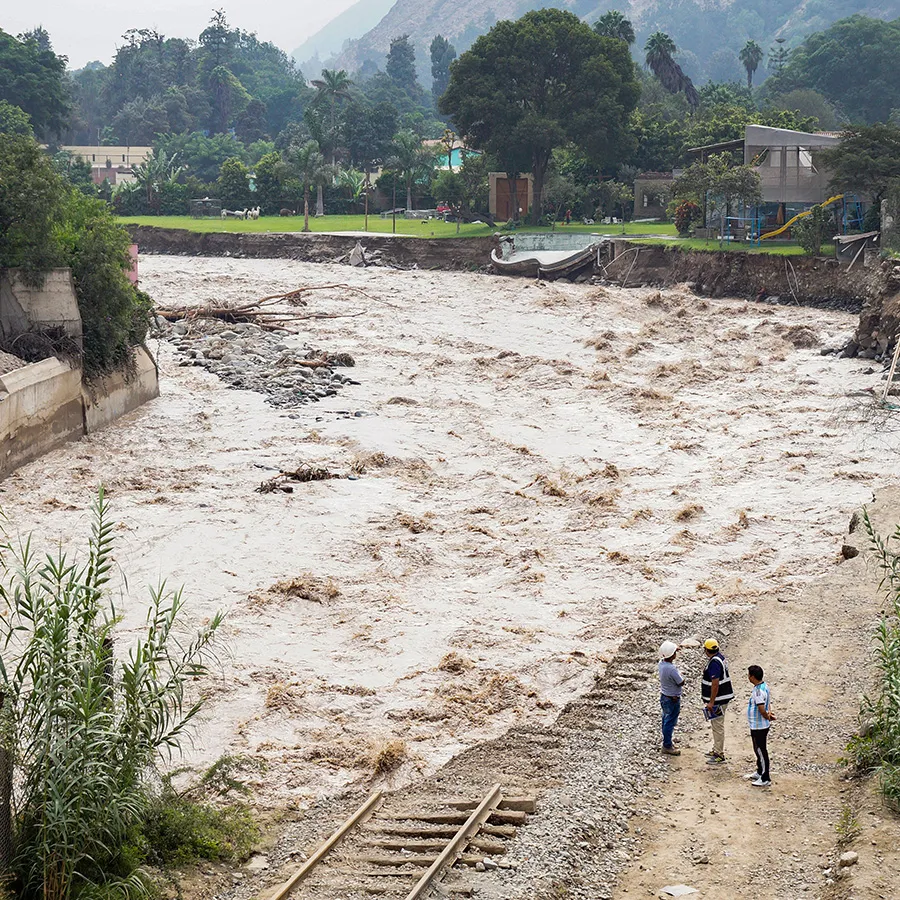

It is worth mentioning, for example, that the northern region accounts for nearly 60% of agricultural exports, mainly in La Libertad, Lambayeque, and Piura.
In 2024, northern Peru—comprising La Libertad, Lambayeque, Piura, Tumbes, Cajamarca, and Amazonas—recorded the lowest economic growth rate (2.7%) compared to other regions. This year, a slight improvement (2.9%) is anticipated due to the recovery of agribusiness and an increase in construction, supported by public projects.
Both sectors, being labor-intensive, will drive job creation and, due to their linkages, will boost activities such as trade and services.
Additionally, an increase in consumer and microenterprise credit is expected, supported by lower delinquency rates, which in 2024 were among the highest in the country (only surpassed by the eastern region).
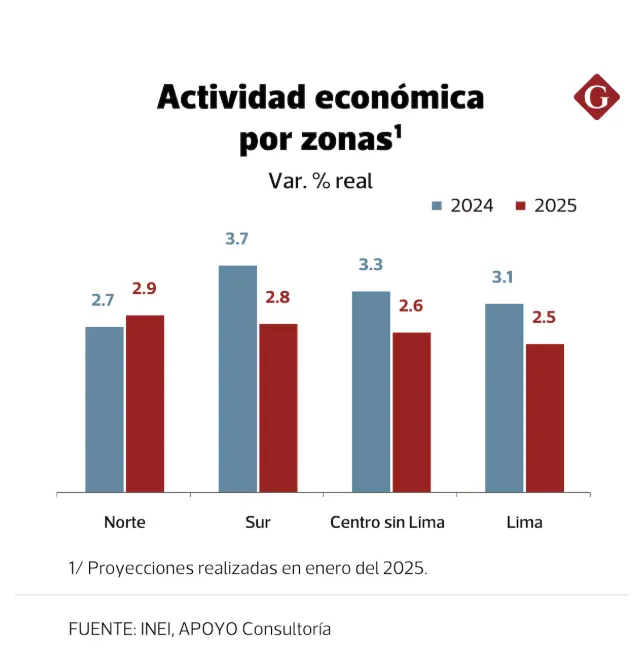
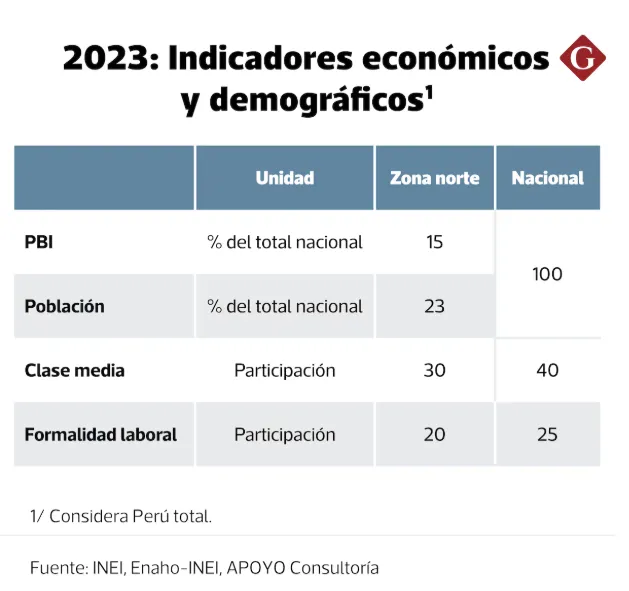
However, this expected recovery for the year remains highly vulnerable to weather conditions. The risk lies in a potential rapid deterioration of meteorological conditions, similar to what happened in 2017. According to recent temperature data, the threshold for a moderate Coastal El Niño has already been surpassed. It remains to be seen how long these levels will persist and what the duration and intensity of the rains will be.
The northern region accounts for nearly 60% of agricultural exports, mainly in La Libertad, Lambayeque, and Piura. Although the 2024 climate, marked by high temperatures and water shortages, was not ideal, it was less adverse than in 2023.
As a result, blueberry and grape production—the two main export products—recovered toward the end of 2024 and early 2025, surpassing pre-El Niño levels.
Looking ahead to this year, specialists, at least for now, project a more favorable climate scenario for agribusiness, with a strong harvest expected from the second quarter onward.
La Libertad, the leading producer of avocados and blueberries, is expected to spearhead this growth, followed by Lambayeque and Piura. This recovery is crucial, though dependent on weather conditions, considering that agribusiness accounts for nearly a third of formal employment in the region.

This year, public investment will grow for the second consecutive year, reaching a record level. This will be mainly due to two factors.
First, the progress of projects under the National Infrastructure Authority—formerly managed by the Authority for Reconstruction with Changes—developed through the “Government-to-Government” scheme, where a foreign state advises the Peruvian government on project execution.
These projects include flood prevention works, such as the construction of dikes, river defenses, and canals, mostly located in La Libertad and Lambayeque, as well as new storm drainage systems in Piura and Tumbes.
Second, new public investment projects are expected to be launched under the traditional state contracting framework. The northern region has the highest number of projects valued at over S/ 50 million tendered in 2024—initiatives with a higher probability of starting and completing works—whose execution will mostly take place in 2025 and 2026.
In the field of Public-Private Partnerships (PPP), progress is also expected in the modernization of the Piura and Chiclayo airports, as well as in the Autopista del Sol, which connects Trujillo with Sullana.
Self-construction in the north is expected to grow again in 2025 after three consecutive years of decline. Its most recent peak was recorded in 2021, when the pandemic encouraged many families to invest in their homes. This recovery will align with improvements in employment—especially formal employment—and the stabilization of construction material prices.
The upward trend was observed from late last year and likely continued through the summer. According to a survey by APOYO Consultoría at the end of last year, about 25% of urban northern families planned to make home improvements in the early months of 2025, surpassing the 21% reported in March 2024 for the following three months.
Regarding the purchase of new homes, especially under the Techo Propio social housing program—mainly concentrated in La Libertad, Piura, and Lambayeque (in that order) due to agro-industrial development—an increase is also expected this year. This boost is primarily explained by the larger subsidies allocated to the region.
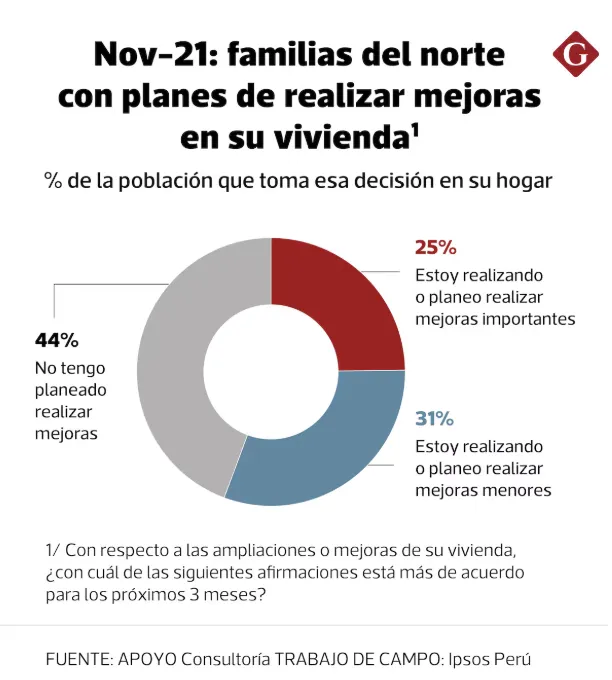
In the north, insecurity, organized crime, and illegal mining will continue to hinder the development of formal economic activity. Additionally, the increasing frequency of climate phenomena and the region’s high vulnerability to them do not create a favorable environment for confidence, leading to greater pessimism among the population compared to other regions of the country.
According to a survey by APOYO Consultoría and Ipsos, 40% of the adult population in the north believes their economic situation will worsen over the next 12 months, far exceeding the national average of 22%. Overall, these factors would lead to limited growth in the region, not only in 2025 but also in the following years.
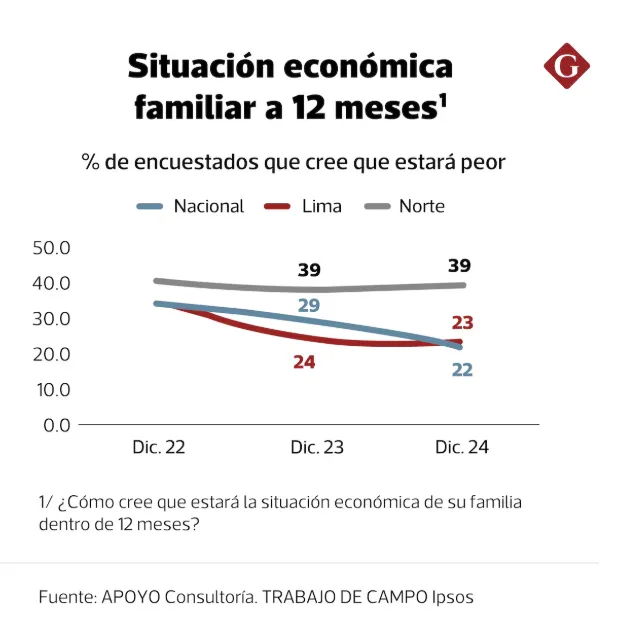
By: Iván Portocarrero, Director of Indutry Analysis at APOYO Consultoría
Insecurity has become one of the country’s main problems for nearly two-thirds of the northern population. According to a survey by APOYO Consultoría, around 40% of adults in this region believe that insecurity limits their ability to generate income.
At the corporate level, 60% of executives who are clients of SAE indicate that crime is one of the factors that would most impact the business environment. As a reflection of this lack of confidence, there are no major private investment projects in the region.
Similarly, illegal mining represents another obstacle. High gold prices and regulations such as Reinfo encourage informal mining activities while discouraging the development of formal mining.
This situation has partially reduced the north’s share of national formal mining production: ten years ago, it contributed 12% of the total, and according to projections, in 2025, it will barely reach half of that figure. On the other hand, the region remains highly vulnerable to climate-related risks.
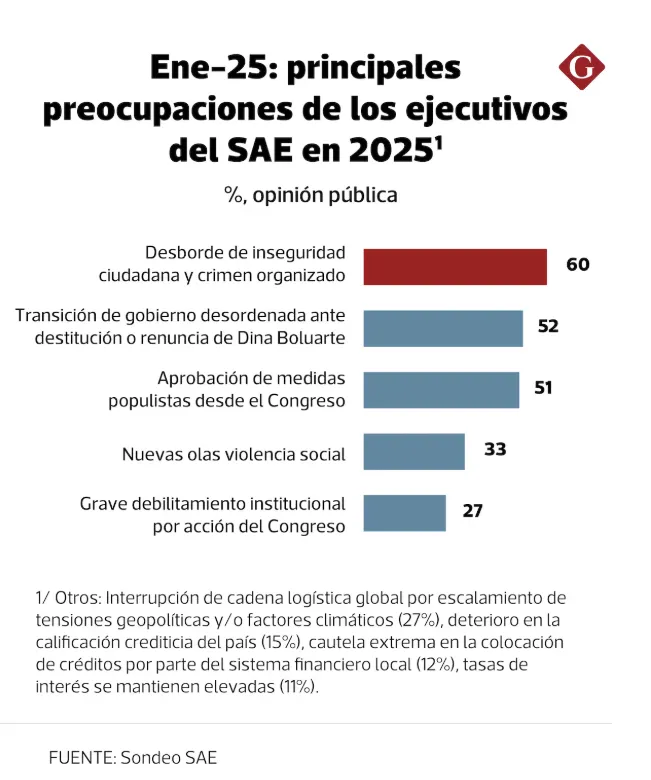
Source: https://gestion.pe/economia/economia-en-el-norte-del-peru-calienta-para-el-2025-pero-tres-amenazas-acechan-piura-tumbes-lluvias-en-el-norte-mineria-ilegal-apoyo-consultoria-noticia/?ref=gesr